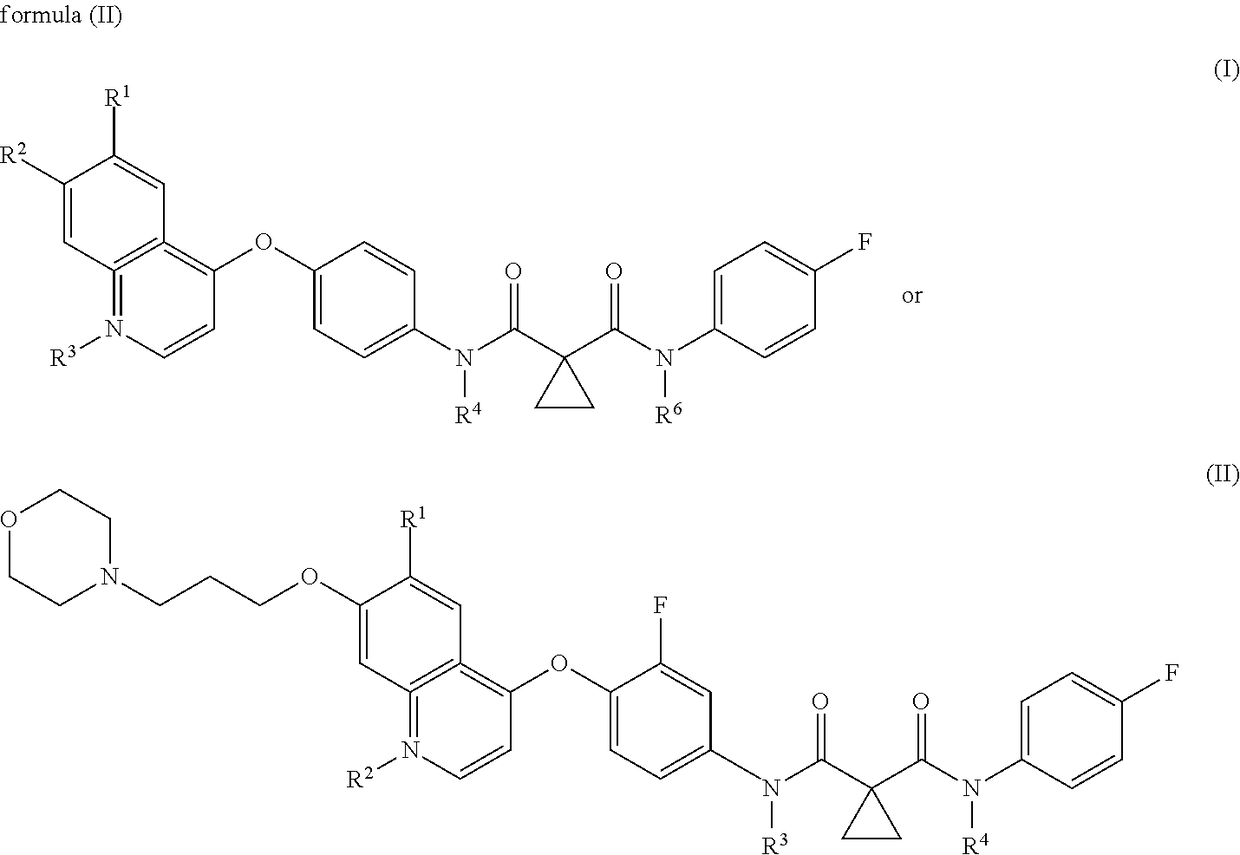Multi-Tyrosine Kinase Inhibitors Derivatives and Methods of Use
a technology of tyrosine kinase and derivatives, which is applied in the direction of organic active ingredients, organic chemistry, and heterocyclic compound active ingredients, can solve the problems of ischemia, microaneurysms, and vision loss, and achieve the effect of preventing fibrovascular proliferative diseas
- Summary
- Abstract
- Description
- Claims
- Application Information
AI Technical Summary
Benefits of technology
Problems solved by technology
Method used
Image
Examples
example 1
Synthesis of Cabozantinib N-Acyl Methyl Palmitate
[0105]
Method
[0106]Cabozantinib was incubated with bromomethyl palmitate in the presence of tetraphenylborate (“NaBPh4”), acetonitrile (“CH3CN”) at 82° C. for X hours resulting in cabozantinib N-acyl methyl palmitate tetraphenylborate. The cabozantinib N-acyl methyl palmitate tetraphenylborate is then incubated with Dowex®-1-chloride (Dowex is a registered trademark of Dow Chemical Company) and acetonitrile:isopropyl alcohol (iPA) to yield cabozantinib N-acyl methyl palmitate chloride.
example 2 (
Virtual)
Formulation
[0107]Cabozantinib N-acyl methyl palmitate (CNAMP) was formulated for intravitreal injection using isopropyl myristate or oleic acid combined with about 10% w / v cyclodextrin and from about 10% to about 30% w / v D-alpha tocopherol PEG 1000 succinate (“TGPS”) which were then solubilized via well-known oil solubilization techniques to create a first solution. The first solution was then added to a saturated fatty acid (e.g. octanoic acid) combined with lecithin or lecithin derivatives (e.g. phosphatidyl choline), a glycerol fatty acid ester (e.g. propylene glycol fatty acid esters such as polyoxyethyleneglycerol triricinoleate), a sorbitan fatty acid ester (e.g. Span® 20, Span® 80) or a olyoxylethylene sorbitan fatty acid ester (e.g. Tween® 20, Tween® 80), and optionally a co-surfactant (e.g. propylene glycol, glycerol, PEG 400, 1,2-propanediol), which were then solubilized as a microemulsion using commercial lipoemulsion techniques (e.g. Intralipid®, Abbolipid).
Metho...
PUM
| Property | Measurement | Unit |
|---|---|---|
| volume | aaaaa | aaaaa |
| intraocular pressure | aaaaa | aaaaa |
| molecular weight | aaaaa | aaaaa |
Abstract
Description
Claims
Application Information
 Login to View More
Login to View More - R&D
- Intellectual Property
- Life Sciences
- Materials
- Tech Scout
- Unparalleled Data Quality
- Higher Quality Content
- 60% Fewer Hallucinations
Browse by: Latest US Patents, China's latest patents, Technical Efficacy Thesaurus, Application Domain, Technology Topic, Popular Technical Reports.
© 2025 PatSnap. All rights reserved.Legal|Privacy policy|Modern Slavery Act Transparency Statement|Sitemap|About US| Contact US: help@patsnap.com



